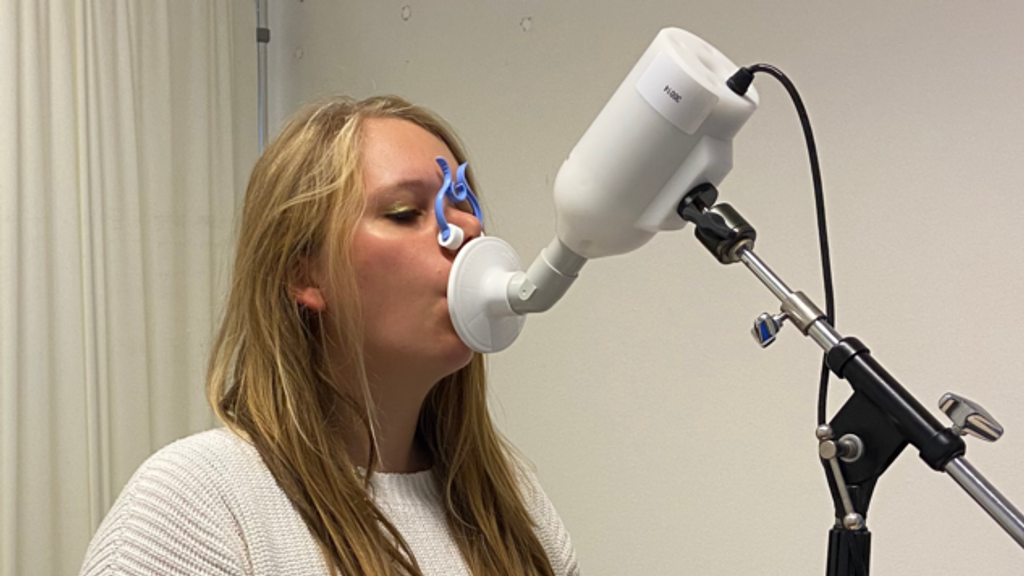
An electronic “nose” can detect with 86 percent accuracy when a lung transplant is beginning to fail, according to research presented at the virtual European Respiratory Society International Congress on Sept. 7.
Nynke Wijbenga said in her virtual presentation that the innovative eNose may help doctors intervene sooner when a transplant begins to fail, potentially improving outcomes.
“About 50 percent of lung transplant patients are diagnosed with chronic [lung] allograft dysfunction [CLAD] or chronic rejection within five years of the transplant. Chronic rejection remains the most important cause of death after lung transplantation, and at the moment, there is no treatment available to reverse it,” said Wijbenga, a PhD candidate at Erasmus University in the Netherlands.

Currently, physicians test patients’ lung function at each follow-up visit after transplant surgery, measuring it against their best peak lung function after the transplant. It takes several months to diagnose CLAD. When lung function drops below 80 percent, doctors evaluate patients to exclude causes that may respond to treatment. For example, lung infections can be treated with antibiotics. Chronic rejection can only be confirmed if the decline persists for three months.
“Once chronic rejection has been confirmed, patients can on average survive for between one and five years. A retransplantation could be a last resort for specific patients with advanced chronic rejection. Therefore, it is of utmost importance to assess if we can predict or diagnose lung transplant dysfunction at an early stage, possibly enabling more successful early treatment,” said Wijbenga.
The eNose contains sensors that detect chemicals called volatile organic compounds (VOCs), which are present in about 1 percent of exhaled breath. VOCs vary according to metabolic processes that occur in the whole body or in parts of it, such as the lungs. When patients breathe into the eNose, the sensors not only detect the pattern of VOCs in the breath but also correct the results to account for the ambient air that has been inhaled. The results are analyzed using machine-learning algorithms (artificial intelligence), and the “breathprint” can be used to identify several lung diseases.
Wijbenga and colleagues examined 91 lung transplant outpatients aged 35 to 73, 47 percent of whom were male, at Erasmus Medical Center between July and November 2020. Using the eNose, the researchers took measurements from each patient and compared the results with their previous diagnoses.
In 86 percent of cases, the eNose was able to discriminate between the 68 patients who had stable lung transplants and the 23 patients who had CLAD.
“These results suggest that the eNose is a promising tool for [CLAD] detection,” said Wijbenga. “However, more research is required before it can be used in the clinic. We need to assess whether repeated measurements in the same patients can provide more accurate diagnoses and even predict CLAD before it occurs. Also, we need to confirm our results in other groups of patients. Nonetheless, we aim to develop this as a technique for wide use across Europe.”
Many lung transplant patients are able to fully resume physical activity following surgery, and many continue to work at least part-time. Complications are inevitable, however. Rejection of the transplant by the immune system can be slowed but not stopped. Immunosuppressant drugs have side effects, including vulnerability to infection, diabetes and kidney damage.
“Anything that [can] help us to detect when a lung transplant is beginning to fail or even to predict it before it occurs will make a real difference to outcomes in this group of patients,” said Stefano Elia, who heads the European Respiratory Society Assembly 8 Thoracic Surgery and Transplantation and was not involved in the study.
Edited by Siân Speakman and Kristen Butler
The post It Nose: Electronic Sniffer Can Detect Lung Transplant Failures appeared first on Zenger News.
